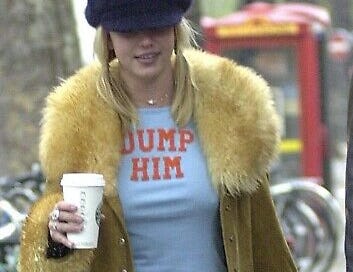“They always come back.... or their lives get worse” :)
For thriving aspirational consumers, is luxury just a different type of toxic ex??
Ok teaaaa: I’ve recently started observing a wee bit of isolationist tension between the luxury economy and her attempts at winning back the aspirational shoppers she’s been neglecting for the past three years. In that tension is an evolving luxury playbook to hook aspirational shoppers in between periods of economic downturn and prosperity (we will discuss Chanel, Zara, Mango, Revolve, and Shopbop below). Why did this rift occur in the first place? Well, it wouldn’t be a Monday edition of trademarked if we weren’t referencing our favorite lil instigator — the global inflation crisis:
Via the Consumer Price Index, Marketplace recently reported that the price of cereal and baked goods is 28% higher than it was during the summer before the pandemic. Crazy tradeoff for a box of cheerios…..however, it’s also important to note that inflation isn’t just a shit-stirrer in an American silo. This is a global crisis, plaguing the majority of global economies – WSJ reported over the weekend that relative to the start of 2021, prices in the eurozone have also been similarly elevated. If we’re playing the blame game, we have geopolitical crises, pandemic-related issues with the global supply chain, and soaring energy prices to thank for our $10 lattes, globally.
As inflation spiked and consumer spending power decreased (relative to the increased cost of goods), luxury brands responded to economic headwinds by making a strategic shift. Rather than risking lower profits by continuing to court aspirational shoppers (those whose big-purchase philosophy is largely “save-to-spend”), big brands like Chanel shifted to building even deeper relationships with ultra-high-net-worth clientele. I know it sounds callous, but I can kind of understand their reasoning. Top spenders were most likely to be insulated from macro themes impacting economic instability. And as a result, Chanel could hedge on the fact that a billionaire’s third wife would likely continue to spend the same or more (depending on increased incentives), despite the implementation of artificial price hikes of +80% (double flaps were $5.8K in 2019 vs $10K in 2024). They knew where their bread was buttered – while the rest of us were aghast over egregious price increases on a single SKU, luxury brands were double clicking on the women who were still able to fight over first access to couture.
This would have been great, fabulous, really… had luxury brands fully considered the threats that could undermine net-positive growth amongst their crown jewel: China. Before the pandemic, Chinese consumers accounted for nearly a third of global luxury sales. Much of this spending relied on the health of China’s property market. However, in mid-2021, China’s property market downturn led to significant financial strain on the same group of target consumers. Big spenders are only beginning to return to global spending after a long period of caution (very similar to our recession anxiety in the US). The light at the end of the tunnel is that the People’s Bank of China cut interest rates and has promised to inject more cash into the economy, however… analysts project that nothing substantial will change until the property market stabilizes. To quote Succession’s Connor Roy, no one’s “super liquid right now.”
Which leads us to the question that has left many analysts scratching their heads over the past year: since China’s luxury spending has been slower to rebound than anticipated, how do we start to build a foundation that makes up for lost growth, longer term? And circling back to the elephant in the room that I mentioned at the top of this letter, I’d like to tag the aspirational shopper: you’re it.
Hope you’re enjoying this week’s TM :) — to continue reading about how luxury brands are strategically collaborating with fast fashion to re-engage aspirational consumers (and what this means for the future of luxury), subscribe to unlock the full article. We’re diving into correlative economic trends, Zara + Mango, and the broader shifts between luxury and the consumer below!!




